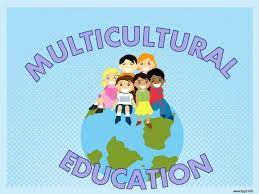Multicultural Classroom Learning
May 01, 2023
This paper discusses the impact of multicultural classroom learning on education. It looks at how integrating different cultures in the classroom can benefit students, and also examines the challenges that may arise from this approach.
Multicultural classroom learning offers an array of opportunities for improvement within education. By exposing students to various cultural practices, values, and beliefs, they are able to gain a greater appreciation for diversity and develop empathy towards those who come from different backgrounds. They also acquire more knowledge about world culture, which allows them to have a better understanding of global affairs. Furthermore, by engaging in activities that promote cross-cultural collaboration, students learn critical thinking skills, strengthen communication abilities and increase their problem solving techniques.
Despite these benefits there are some potential drawbacks associated with multicultural classroom learning. For instance, some students may feel uncomfortable with the presence of other cultures and may struggle to accept them in the classroom. Additionally, there is a risk that teachers might not be adequately prepared to handle diverse student groups and could potentially perpetuate cultural stereotypes. Lastly, resources are often limited, meaning teachers may not have access to adequate materials or resources necessary for an effective multicultural class.

In order for schools to reap the full benefits of multicultural classroom learning, it is important for them to take all of these considerations into account. It is also essential that teachers receive appropriate training in this area so they can address any potential issues that could arise as well as provide their students with meaningful experiences that will help foster appreciation towards different cultures. With this approach, multicultural classroom learning can be a powerful tool in improving education.
In conclusion, it is evident that there are numerous benefits associated with multicultural classroom learning, but also potential drawbacks which must be addressed and managed carefully. With the right precautions, schools can provide their students with an enriching learning environment that fosters cross-cultural understanding and appreciation. In turn, this will result in more knowledgeable and empathetic graduates that are better equipped to engage in an increasingly diverse world. Therefore, it is essential for educational institutions to recognize the significance of multiculturality within the classroom setting and take advantage of its potential to create meaningful teaching experiences for students from all backgrounds.
